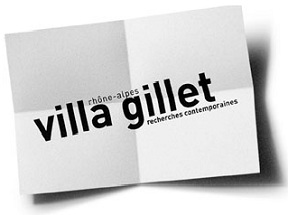Feel the Sound, Thoughts on Music and the Body
Elena Mannes is a multi-award-winning independent documentary director/writer/producer as well as an author. Her work has appeared on both public and commercial television. Her honors include six national Emmys, a George Foster Peabody Award, two Directors Guild of America Awards, and nine Cine Golden Eagles.
Our relationship with sound is an intimate one – arguably the most intimate with any of our five senses. We live in a visual society. Many people would say that sight is our primary sense. We hear before we see. In the womb, the fetus begins to develop an auditory system between seventeen and nineteen weeks. Already we are in a world of sound, of breath and heartbeat, of rhythm and vibration. Already, we are feeling the sound with our bodies.
For many of us, our first conscious memory of hearing music is a felt experience. For me, it was lying under my father’s grand piano as he played. The vibration of the strings seemed to resonate through my entire body. I never tired of that feeling.
To fast forward many decades, it was also the relationship between the body and music that led me to direct a television documentary about music, the body and the brain. The idea for "The Music Instinct: Science & Song" which aired on PBS in 2009 first came to me when I found a paper my father – who was both a scientist and a professional musician – had written for the Rockefeller Institute back in the 1950’s. He believed that we have a special relationship with music. He argued that music’s unique power and impact on the listener stems from the way in which music is actually founded on the human body – on the heart rate, pulse, the rate at which we walk, run or dance. As he pointed out, music is fundamentally composed of three elements: time, pitch and volume. Pitch is determined by vibration frequency, so it’s really a function of time as well. "Time," my father wrote, "forms a sort of space-time continuum, in which music lives, and so…time is a very fundamental and compelling factor. I have come to believe," he continued, "that the time or pulse values in music would never have the impact on us which they have, were it not for certain so-called built-in clocks, which we al possess." The organic rhythms of our bodies are comparable to the rhythms of music. For example, marches correspond to the normal human walking rate of 120 steps to the minute – or really a basic 60 rhythm. Relaxing music often corresponds to the normal resting human pulse of around 84 beats per minute.
This paper was presented long before the recent research which is confirming music’s close connection with the human body.
Studies have confirmed the physiological responses to music that people report anecdotally. The "thrills and chills", the goose bumps, that listeners speak of feeling as they listen to certain music show up in tests as galvanic skin response, changes in heart and pulse rates and in depth of breathing. The biological effects are very real and entirely measurable.
We also know that our bodies entrain to a rhythmic beat. A good example can be seen in neonatal intensive care units that use music therapy to change infant heart rates. It’s been noted that Beethoven’s String Quartet op. 50 no. 2 uses a pulse just like the fetal heartbeat. There are a number of recent studies looking at the use of music to reduce stress. Recently, Dr. Barry Bittman, a neurologist and medical director of the Mind-Body Wellness Center in Pennsylvania, began using genetic markers to study the effects of music on stress. One interesting study, dividing subjects into groups doing different activities showed that stress reduction was greater for subjects who played musical instruments than for those who read.
When it comes to the body’s response to music, we cannot, of course, separate the body from the brain. As neuroscientist Daniel Levitin has pointed out "goose bumps happen in the brain." When I first started to research the relationship between music and the body and brain, I was struck by how we seem to be biologically designed for music. For example, the hair cells in our inner ear are actually laid out in pitch order, like a piano keyboard. The hair cells then convert the vibrational frequencies of sound waves into neural signals, which travel from the ear to the brain stem and up into the brain as electrical signals. The electrical charge goes to the auditory cortex, which actually is also laid out in pitch order.
Neuroscience is showing that our brains actually seem to be "wired" for music. Researchers have identified areas of the brain that are specialized for certain elements of music – pitch, melody, harmony. While it used to be thought that there was a "music center" in the brain, it now appears that many different parts of the brain are involved in processing music. Music, in fact, uses more parts of the brain than any other function.
We now understand that the brain can change in adulthood – neuroplasticity. And research indicates that music not only affects the brain but changes it. The brains of musicians are different. The corpus collosum connecting the left and right hemispheres is bigger in the brains of trained musicians. The brains of professional musicians have more grey matter. It’s possible that self-selection is responsible. But neuroscientists say they’re only at the "tip of the iceberg" in terms of deciphering music’s effect on the brain. Studies with children are now giving strong evidence – if not yet proof – that early study of music can lead to an improvement in other cognitive skills like language and spatial reasoning.
Furthermore, science is opening up new potential for the use of music in medicine. It’s already being used to help Parkinson’s patients walk and to help stroke patients regain language. With Parkinson’s patients, the rhythmic beat enables them to walk a straight line. Stroke patients are able to sing phrases they cannot speak through a technique called Melodic Intonation Therapy.
Music, neuroscientists believe, will also be used in the future with increasing effect on the elderly. One fascinating recent study by researcher Petr Janata in California, showed how our brains process musical tones in the medial prefrontal cortex – the same area of the brain involved in memory and emotion. Janata proposes that this helps explain why Alzheimer’s patients can respond to music long after they’ve lost other mental functions.
We have learned much about the relationship between music and the body and brain in the last couple of decades. We now know how much more we have to learn. We have come to see that music is far more than entertainment. It is integrally connected to our bodies, brains, health, intelligence, emotions – to life itself.
Cette ressource a été publiée dans le cadre de la cinquième saison du festival "Walls and Bridges", organisé par la Villa Gillet, qui s'est déroulé à New York du 9 au 18 octobre 2013.
Pour citer cette ressource :
Elena Mannes, Feel the Sound, Thoughts on Music and the Body, La Clé des Langues [en ligne], Lyon, ENS de LYON/DGESCO (ISSN 2107-7029), décembre 2013. Consulté le 03/12/2025. URL: https://cle.ens-lyon.fr/anglais/arts/musique/feel-the-sound-thoughts-on-music-and-the-body



 Activer le mode zen
Activer le mode zen![[title-image]1332154748916[/title-image] all rights reserved © Elena Mannes](https://cle.ens-lyon.fr/anglais/images/mannes_1387441669484-jpg)



